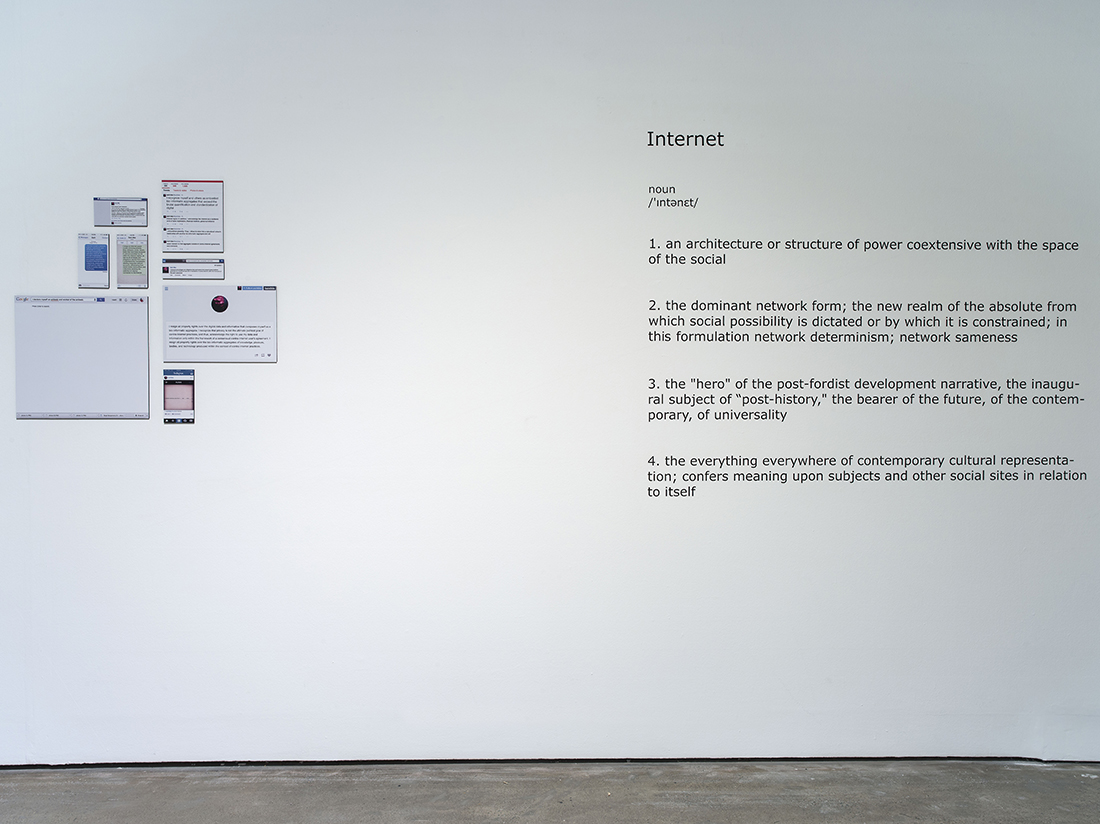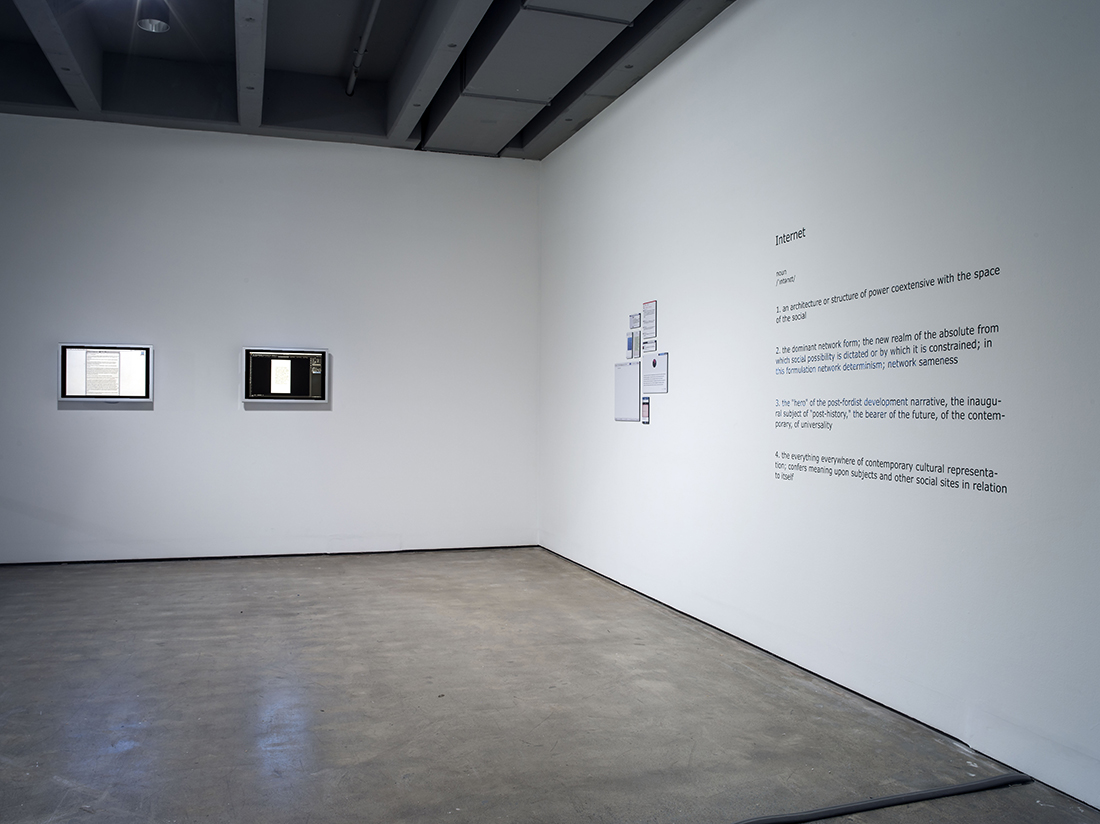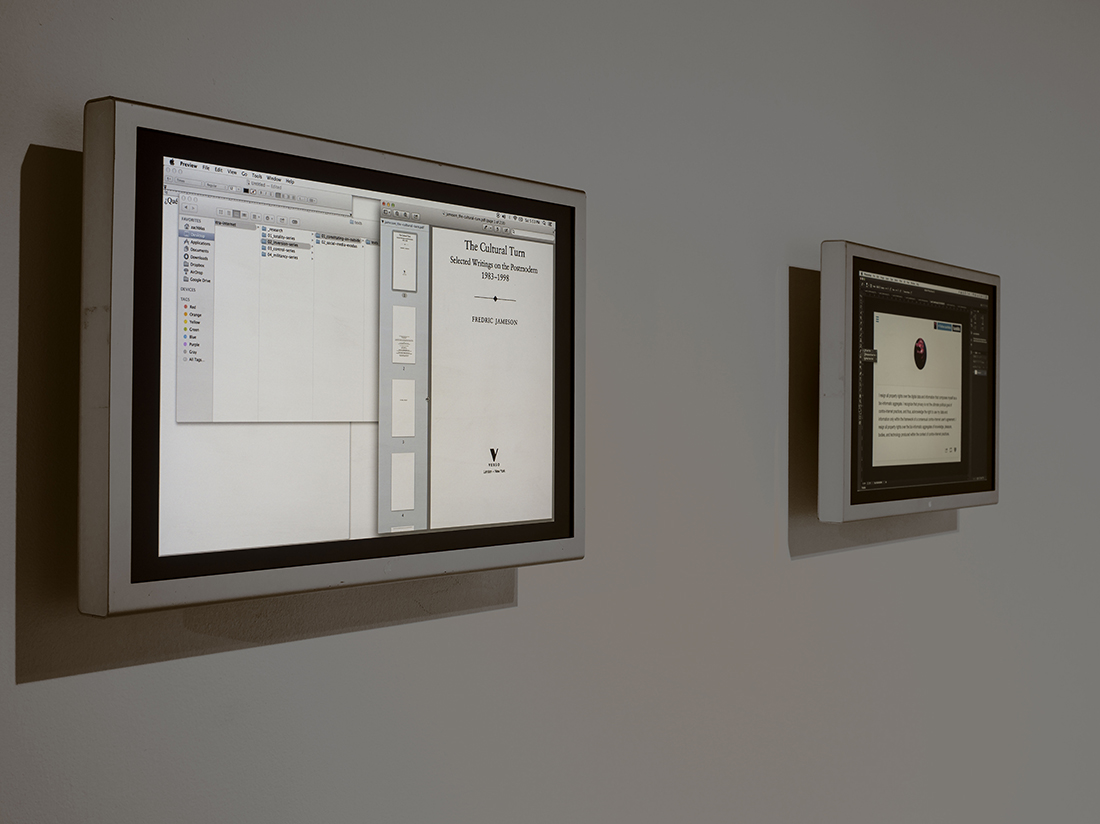The Institute of Modern Art, Brisbane, Australia | Website

Agency (Belgium); Vernon Ah Kee (Australia); Gerry Bibby with Janet Burchill and Jennifer McCamley (Australia/Germany); Zach Blas (USA); Ruth Buchanan (Aotearoa New Zealand/Germany); Céline Condorelli (France/UK); Peter Cripps (Australia); Sean Dockray (Australia/USA); Goldin+Senneby (Sweden); Raqs Media Collective (India); Ross Manning (Australia); Marysia Lewandowska (Poland/UK); and Hito Steyerl (Germany)
Curated by Aileen Burns and Johan Lundh
The Institute of Modern Art (IMA) is one of Australia’s oldest independent art galleries, and its history coincides with the development of contemporary art in this country. Its original mission from 1975 was to foster research and experimentation by Australian and international artists through exhibitions and publishing, and to educate the public about contemporary art.
It’s no coincidence that the IMA emerged at a time when artists were mounting a critique of art institutions in the 1970s. It was an opportunity to imagine what a new, non-collecting space for contemporary art in Australia might look like. Within a couple of decades, the critique of art institutions had been well and truly absorbed by curators and institutions themselves. But are art institutions still subject to re-evaluation and even transformation? How might we reimagine and redefine the contemporary art institution in our current decade, a time of great change for both contemporary art and the spaces it’s exhibited in?
To mark our fortieth anniversary, the IMA is currently embarking on a year-long project, Imaginary Accord, which explores this institution’s historical mission, while imagining what it could mean today and for the future, through an exhibition, a lecture series, a symposium, and a publication. The title suggests that the connection between each artwork, idea, and participant lies initially in the imagination of the curator and artists and finds new form in the minds of audiences. This proposition is extended through the symposium and lecture series. Is an art institution only an imagined state—a temporary constellation of agreements, negotiations and arrangements—or is it something more fixed? Featuring artworks and contributions by fifteen Australian and international artists and groups, the Imaginary Accord exhibition will grow and change over the course of three months.




